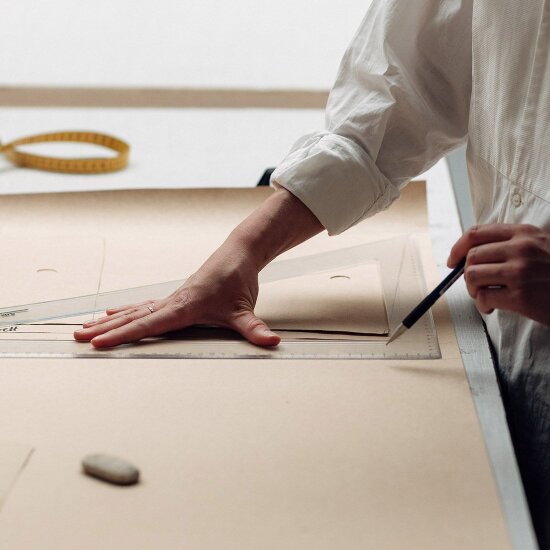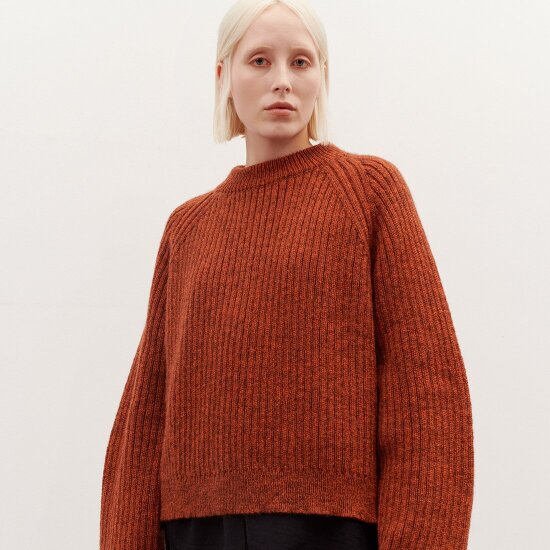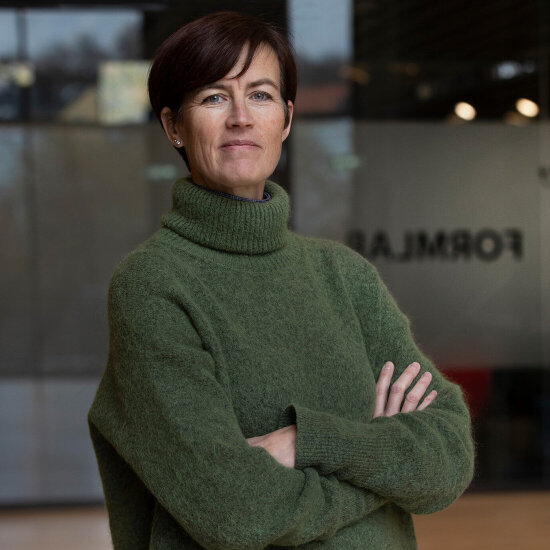Norway began industrial textile manufacturing in the mid-1800s, with the capital as the main production hub, fuelled by traditional crafts, the availability of wool and hydropower from Oslo’s main river, Akerselva. Soon there were mills and factories throughout most of the country, but by the mid-1900s many had moved their manufacturing abroad.
Clothes for cold mountain climates
A few companies chose to stay, producing high-quality materials and providing important local jobs, and have since become some of Norway’s most renowned brands. Rauma has been producing outstanding woollen yarn since 1927, and Røros Tweed, who started out making woollen clothes for cold mountain climates, is now a market leader in quality woollen blankets.
Gudbrandsdalens Uldvarefabrik has been supplying durable woollen furniture fabrics since 1887 and stays competitive with a passion for both design and the environment. Most recently, Lillunn, who for over 60 years has been making garments in Norwegian lambswool, was taken over and given a fresh lease of life by young fashion designer Elisabeth Stray Pedersen, who combines age-old traditions with contemporary design.
All kinds of weather
Warm and durable materials for all kinds of weather have been essential in the development of Norwegian clothes and fashion design. For example, Helly Hansen, who since 1877 has provided protective waterproof gear for fishermen and workers, has also broken into the sports and streetwear markets by combining innovative materials with modern, stylish designs.
Norwegian Fashion Hub, a cluster working to promote and develop the Norwegian fashion industry, has done extensive research into what makes Norwegian design unique. In a society built on equality, creativity and quality are accessible to all. But perhaps more importantly, many cities are close to the great outdoors, and distances between work and private life are short, so most Norwegians enjoy a varied and active lifestyle.
We prefer clothes that not only look and feel good, but that are also practical – items you can wear every day, irrespective of the weather or occasion, be it at work, at an after-work dinner or party.
Designed to last
A typical office wardrobe for both men and women is pretty casual and can include jeans and trainers so that they can easily cycle to kindergarten afterwards to pick up their kids. There are of course people who have dress more formally, and you are likely to see them wearing galoshes from Swims over their shoes when it rains. But most contemporary Norwegian fashion is for regular everyday use. It’s designed to last, and natural fabrics such as wool, cotton and silk are combined with innovative technical materials to create garments that are comfortable and robust with a subtle and timeless design.

Photo: Thomas Ekström
Taking Norwegian traditions abroad
It’s probably this down-to-earth approach that inspired Per Spook, the first Norwegian designer to have his own fashion house in Paris during the late 1970s. Although he had worked for legendary designers such as Christian Dior and Yves Saint-Laurent, Per stood out by incorporating traditional Norwegian patterns and techniques in his designs.
He believed that women look their best if they feel comfortable and free, and he created an unpretentious style that was elegant and modern, often embracing strong colours and contrasts. He was also the first designer in Paris to dress models in flat shoes - quite shocking at the time and a challenge to the preconception of female elegance.
Since then, several Norwegian fashion designers and textile companies have made an international impact. Oleana designs and manufactures women’s knitwear in sustainable materials with modern interpretations of traditional patterns, while Moods of Norway took Norwegian symbols to the extreme with their trademark tractor logo and vivid colours; they even embroidered the number of registered tractors in Norway inside their suits and shirts.

Photo: Oleana

Photo: Torjus Berglid
Scandinavian lifestyle
During the last few years, the interest in Norwegian fashion has exploded, thanks to a growing international interest in all things Scandinavian – whether it’s politics, design or our way of living. Designers and companies such as Tom Wood, Holzweiler, Norwegian Rain and Livid Jeans have all managed to gain a strong foothold abroad by building resilient brands based on quality natural materials, subtle design and Scandinavian lifestyle.
A sustainable future for fashion
According to Norwegian Fashion Hub, the Norwegian fashion and textile industry currently has an annual turnover of around 66 billion NOK and employs about 41 000 people. Since 2016, export of textiles, clothes and leather goods has increased by almost 8 %. The potential is vast, but the industry faces enormous challenges globally. As the second largest polluter in the world, the fashion and textile industry needs radical innovation and restructuring.
Transitioning towards a sustainable industry is, therefore, a priority for Norwegian Fashion Hub. As a result, several ongoing projects to develop relevant knowledge are underway, involving local designers and manufacturers.
Consumers are increasingly choosing brands that take more responsibility for the environment and society. In Norway, the fashion industry is joining forces through Norwegian Fashion Hub to create a significant impact. New technology and more sustainable materials is a major driver of innovation, and through Oslo Textile Lab textile companies aim to gain greater control over the development stage of their product cycle.
Digital design reduces environmental impact
New business models and companies are appearing as a reaction to fast fashion and large volume production. Fjong, for example, is enjoying considerable success renting out new and vintage women’s clothes. Increasing digital competence is also changing on-demand manufacturing worldwide. Following on from an international trend of purely digital fashion houses, Norwegian clothing retailer Carlings has just launched its first digital collection with zero environmental impact.
Whatever the future holds, now is the time to seize these new possibilities. The Norwegian fashion and textile industry are continuously working for a more sustainable future while valuing the knowledge and traditions from the past.
To find out more, you can get in touch with Norwegian Fashion Hub.

